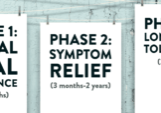Peanut Allergy
Peanut allergy is not the most common food allergy, but it is the most common food associated with severe allergic reactions.
 Peanut allergy symptoms:
Peanut allergy symptoms:
- Eczema
- Stomach upset
- Congestion
- Skin itching
Some people with severe peanut allergy who have an accidental exposure to peanuts have immediate reactions such as:
- Hives
- Vomiting
- Diarrhea
- Mouth or throat itching
- Wheezing
- Severe systemic reaction called anaphylaxis
Testing for peanut allergy can be done through a skin test with peanut extract, a blood test, or through a food challenge with peanuts. We recommend testing food allergy with a blood test because some people are sensitive to even the smallest amount of peanut used in skin testing. New “component” blood tests can help identify which patients are more susceptible to life-threatening reactions.
Can allergy drops help peanut allergy?
 The amount of peanut that triggers an allergic reaction may be a few grams (several peanuts) or a few milligrams (hidden or trace amounts in a food). Allergy drop treatment for peanut allergy begins at a much lower level than the amount that triggers reactions. This small amount placed under the tongue is enough to retrain the immune system to tolerate peanuts, yet not so strong to trigger an allergic reaction. The specific amount is matched to each individual patient based on their history, exam and test results.
The amount of peanut that triggers an allergic reaction may be a few grams (several peanuts) or a few milligrams (hidden or trace amounts in a food). Allergy drop treatment for peanut allergy begins at a much lower level than the amount that triggers reactions. This small amount placed under the tongue is enough to retrain the immune system to tolerate peanuts, yet not so strong to trigger an allergic reaction. The specific amount is matched to each individual patient based on their history, exam and test results.
If you are peanut allergic, it is usually best to limit peanut in your diet. If you have a severe peanut allergy, it may be necessary to avoid peanuts completely.
The goal of allergy drop treatment is to balance safety and efficacy. The treatment goal for highly peanut allergic patients may be to build enough tolerance to reduce risk of severe reactions in case of accidental exposure; for others it may be to re-introduce peanut in their diets.










